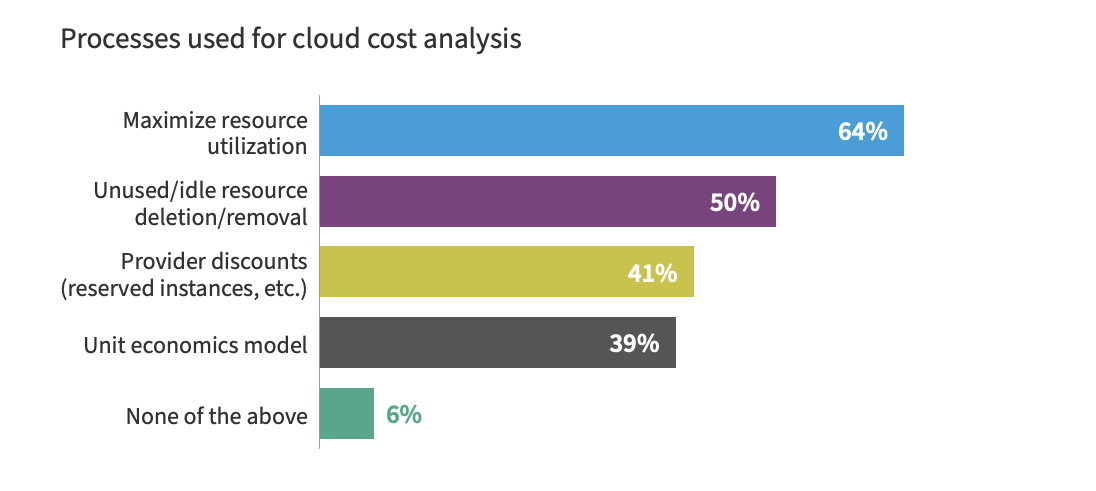Moving business operations to the cloud is like taking to the open sea: the digital world is constantly changing and growing, and the possibilities are endless.
It is estimated that 60% of business data is stored in the cloud. As more and more companies realize how cloud computing can revolutionize their operations, a smooth transition is crucial.
The success of this complex data innovation tango depends on careful preparation and execution of the cloud migration strategy. In the world of the cloud, every decision serves as a landmark and every thought as a vital coordinate on the road to a future characterized by technical mastery, scalability, and efficiency. In our new detailed checklist, we sail the cosmic waters of the cloud and chart a route for a migration that overcomes obstacles and realizes the full potential of an ever-changing digital world.
What is Cloud Migration?

Cloud migration is the strategic transfer of a company’s digital resources from a local infrastructure to a cloud computing environment. This process aims to leverage the benefits of the cloud, such as scalability, flexibility, and cost efficiency. A successful migration requires careful planning and execution, with various strategies available, from a simple “lift and shift” to a more complicated restructuring.
The goal is to leverage the benefits of the cloud while ensuring seamless performance and security. Ultimately, cloud migration allows organizations to increase agility, reduce operational burden, and focus on key business priorities in a rapidly evolving digital landscape.
Cloud Migration Benefits
Cloud migration is not just a buzzword. It is a fundamental shift in the way companies work and use technology. Today, 73% of companies name cloud migration as one of their biggest cloud challenges. This underlines the growing importance of cloud migration strategy for optimizing business processes and opening up new opportunities. Let’s look at the key benefits companies can gain from migrating to the cloud.

5 Cloud Migration Benefits
- Scalability: Cloud platforms offer the flexibility to scale resources up or down based on demand, ensuring optimal performance and cost efficiency.
- Cost savings: The cloud eliminates the need for substantial upfront investments in hardware and infrastructure, allowing organizations to pay for what they use.
- Agility and innovation: Cloud services enable faster deployment of applications and updates, fostering innovation and responsiveness to market changes.
- Improved security: Reputable cloud providers invest heavily in security measures, often surpassing what individual organizations can achieve on their own.
- Global accessibility: Cloud-based applications and data can be accessed from anywhere, promoting collaboration and remote work.
Cloud Migration Checklist: Navigating the Journey to the Cloud
Moving to the cloud is a smart move that can change the way companies work and develop new ideas. A thorough migration checklist is necessary to ensure the transfer goes smoothly. Our long list of cloud migration steps includes detailed explanations to help organizations understand the complicated cloud migration process.
1. Clarify your objectives and goals
- Set specific goals. Formulate the reasons for the migration—be it to improve scalability, reduce costs, or increase flexibility.
- Align with business strategy. Ensure migration goals align with the overarching business strategy for a cohesive and integrated approach.
- Quantify goals. Make objectives measurable to assess the success of the migration and provide tangible benchmarks for progress.
Valuable insight: Organizations that approach a cloud software development company with a clear understanding of its impact on business objectives foster a more unified and resilient digital transformation. According to a survey by McKinsey, organizations that align their cloud migration goals with broader business strategies are more likely to achieve successful outcomes.
2. Conduct a thorough cloud readiness assessment
- Evaluate existing infrastructure. Assess the current state of applications, data, and infrastructure to identify compatibility issues and potential challenges.
- Analyze network capabilities. Evaluate network capabilities to identify potential bottlenecks and ensure a seamless migration process.
- Identify dependencies. Pinpoint dependencies and integration points to prevent disruptions during the migration.
Valuable insight: A meticulous readiness assessment serves as the foundation for a successful cloud migration process, fostering a proactive environment that anticipates and addresses potential hurdles.
3. Choose the right cloud migration strategy
- Assess application characteristics. Evaluate each application’s characteristics to determine the most suitable cloud migration strategy—whether it’s lift-and-shift, re-platforming, or re-architecting.
- Consider the business impact. Understand the impact of migration on business processes and end-users before selecting a migration strategy.
- Prioritize applications. Prioritize critical applications based on their importance to the business and the complexity of migration.
Valuable insight: Tailoring cloud migration strategies to individual applications ensures a bespoke approach, optimizing the benefits derived from each unique software component.
4. Select cloud migration tools
- Align with a migration strategy. Choose tools that align with the selected cloud migration strategy, ensuring compatibility and seamless integration.
- Evaluate scalability. Assess the scalability of the tools to accommodate the size and complexity of the migration.
- Consider automation. Prioritize cloud migration tools that offer automation capabilities to reduce manual errors and enhance efficiency.
Valuable insight: Automation is not just a convenience. It is a strategic advantage that enables companies to streamline processes, minimize errors, and accelerate migration.
5. Develop a comprehensive cloud migration plan
- Create a detailed roadmap. Develop a thorough plan outlining tasks, timelines, and responsibilities for each phase of the migration.
- Prioritize critical components. Identify and prioritize critical applications and data for migration, taking into account dependencies and interactions.
- Define rollback procedures. Establish rollback procedures to maintain control in the event of unexpected issues during migration.
Valuable insight: A meticulously crafted migration plan serves as a guiding blueprint, fostering adaptability and allowing organizations to navigate unforeseen cloud migration challenges confidently. Surprisingly, 80% of companies are satisfied with cloud migration projects.
6. Address cloud migration challenges
- Identify potential issues. Proactively identify and document potential challenges, such as data security concerns, downtime, and staff training needs.
- Develop mitigation strategies. Develop mitigation strategies for each identified challenge, ensuring a proactive response.
- Incorporate contingency plans. Integrate contingency plans into the overall migration strategy to handle unforeseen issues effectively.
Valuable insight: Challenges are not roadblocks but opportunities for innovation. Addressing them proactively enhances organizational resilience and promotes a culture of continuous improvement.
Additional Considerations When Migrating to the Cloud
Of course, there are other considerations beyond the cloud migration checklist to ensure a comprehensive understanding of what organizations should consider when moving to the cloud. Let’s have a closer look at some of them.
Cost management and optimization
- Forecasting and budgeting: Anticipate and plan for the costs associated with cloud services. Utilize cloud cost management tools to monitor and control expenses effectively.
- Resource optimization: Regularly assess and optimize resource usage to avoid unnecessary expenses. This includes maximizing resource utilization, removing unused resources, provider discounts, and more.

Integration with existing systems
- Legacy system compatibility: Assess the compatibility of existing legacy systems with cloud software development company services. Ensure seamless integration to maintain the functionality of critical business processes.
- APIs and middleware: Leverage APIs and middleware solutions to facilitate communication between on-premises and cloud-based systems, promoting interoperability.
Disaster recovery and business continuity
- Backup and recovery strategies: Develop comprehensive backup and recovery strategies to safeguard against data loss. Consider geographic redundancy and failover mechanisms for business-critical applications.
- Testing and simulations: Regularly test disaster recovery plans to validate their effectiveness. Simulate scenarios to ensure a quick and reliable recovery in case of unexpected events.
Vendor lock-in mitigation
- Adopting standards: Embrace industry standards and open-source technologies to mitigate the risk of vendor lock-in. Choose cloud services that adhere to widely accepted protocols.
- Data portability: Ensure data portability by adopting formats and structures that facilitate easy migration between cloud providers or back to on-premises infrastructure if necessary.
Performance monitoring and optimization
- Real-time monitoring: Implement real-time performance monitoring to identify bottlenecks and address issues promptly. Leverage monitoring tools to gain insights into system behavior.
- Continuous optimization: Cultivate a culture of continuous improvement by regularly optimizing cloud resources based on performance metrics and evolving business requirements.
Security awareness and training
- Cybersecurity training: Conduct regular cybersecurity training sessions to educate employees on security best practices. Enhance security awareness to mitigate the risks associated with human error and social engineering attacks.
- Security incident response: Establish a robust incident response plan to address security incidents swiftly. Regularly conduct drills to ensure the readiness of the incident response team.
While the cloud migration checklist focuses on the technical aspects of the transition, these additional considerations address the broader issues that determine cloud migration success. By considering these factors, organizations can develop a well-rounded cloud migration strategy that not only ensures a smooth migration but also positions them for lasting success in the cloud environment.
Large Companies Embracing Digital Transformation
The transition to cloud computing is not just for start-ups or smaller companies. Many industry giants have embarked on this transformative journey, reshaping their digital landscapes and setting new benchmarks for innovation and efficiency. Let us look at the success stories of large companies that have transitioned to the cloud.
The Coca-Cola Company
Coca-Cola aimed to modernize its supply chain and streamline operations across its extensive global network. The company partnered with Salesforce to migrate its supply chain to the cloud. The implementation included Salesforce’s cloud-based solutions for sales and supply chain management. The cloud migration enabled Coca-Cola to gain real-time visibility into its supply chain, optimize inventory management, and enhance collaboration with suppliers and distributors.
Airbnb
Airbnb, a disruptor in the hospitality industry, needed to scale its platform quickly to accommodate a growing community of hosts and guests. The company migrated its infrastructure to AWS, allowing it to scale horizontally, improve reliability, and seamlessly roll out new features. The move to the cloud supported Airbnb’s explosive growth and enabled the platform to process millions of listings and bookings worldwide.
Capital One
Capital One was looking to modernize its operations and improve the digital customer experience in the financial industry. The company opted for a multi-cloud strategy, utilizing both AWS and Microsoft Azure. This move involved migrating key applications and adopting cloud-native technologies. The transition enabled Capital One to accelerate application development, improve cybersecurity measures, and foster a culture of continuous innovation in financial services.
General Electric (GE)
As a global conglomerate, GE faced the challenge of optimizing its operations and harnessing data for predictive analytics in industrial settings. GE developed Predix, an industrial cloud platform, to connect machines, collect data, and enable predictive maintenance. The platform is hosted on the cloud, providing scalability and real-time analytics capabilities. Predix has empowered GE to transform its business model, offering predictive maintenance services and optimizing industrial operations globally.
Netflix
As a global streaming service, Netflix faced the challenge of scaling its infrastructure to meet the demands of an ever-growing user base. The company overcame this challenge by migrating its extensive content library to Amazon Web Services (AWS), leveraging the cloud provider’s scalability and robust infrastructure. This move enabled Netflix to seamlessly handle spikes in demand, optimize content delivery, and expand its international footprint.
Final Thoughts
With a detailed cloud migration strategy, companies can move to the cloud with ease. By following the 6 steps outlined above, businesses can minimize risk, reap the benefits of cloud computing, and position themselves for success in the digital age. Remember, cloud migration is an ongoing process of optimization and innovation that enables companies to stay ahead in today’s dynamic business world. So, choose the right development partner and start your journey to the cloud.




